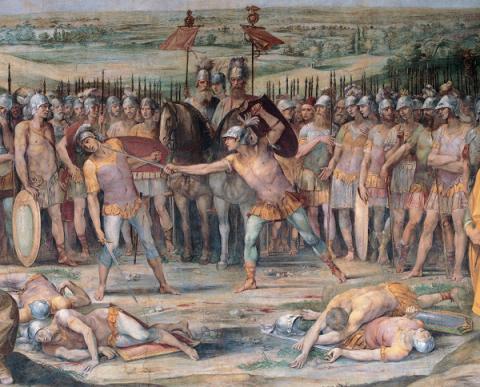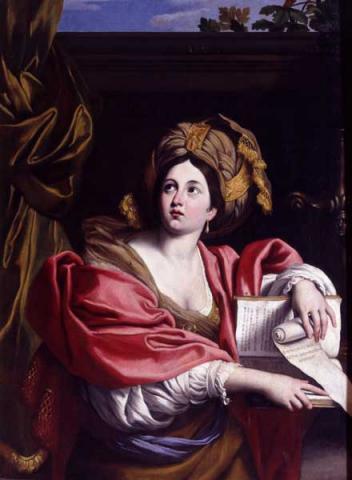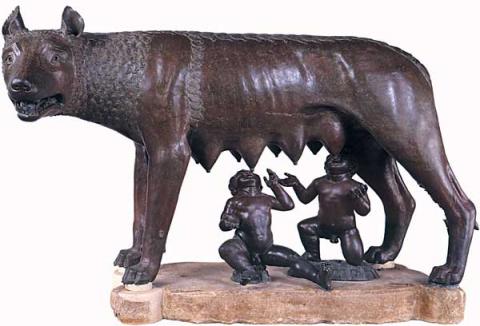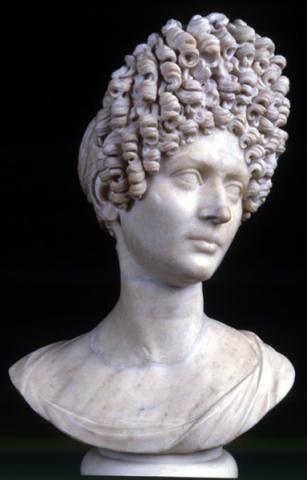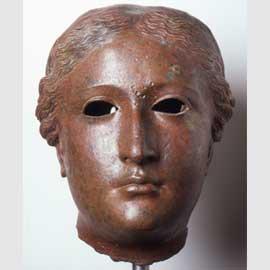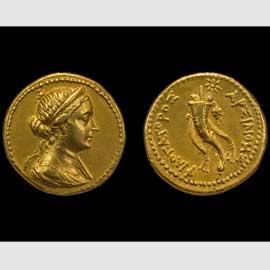Queen Arsinoe
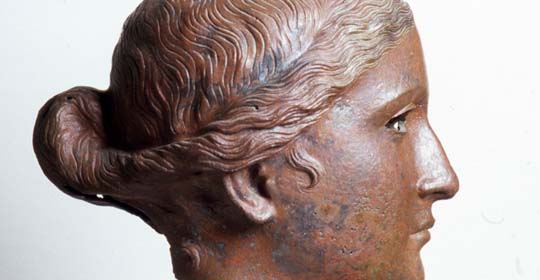
The Capitoline Museums play host to the magnificent bronze head of Ptolemaic Queen Arsinoe III, on temporary loan from the Municipal Museum in the Palazzo Te in Mantua.
Between 3 April and 6 July, the Palazzo dei Conseravotri site of the Capitoline Museums is delighted to be playing host to the magnificent bronze head of the Ptolemaic Queen Arsinoe III, on temporary loan from the Palazzo Te Municipal Museum in Mantua, during its first ever Roman sojourn.
The agreement between the two museums will see several masterpieces from the collections of ancient relics normally held in the Palazzo dei Conservatori, the Palazzo Nuovo and the Centrale Montemartini in Rome, wing their way Mantua where they will be displayed as part of an exhibition entitled “La Forza del Bello. L’arte greca conquista l’Italia” (The power of beauty: Greek Art conquers Italy), an event sponsored by the City of Rome’s Department for the Arts in collaboration with Mantua’s Palazzo Te Municipal Museum.
Arsinoe III, the daughter of Ptolemy III and Berenice II was born in either 246 or 245 BC and was Queen of Egypt between 220 and 204 BC. She married her brother, Ptolemy IV sometime between the end of October and early Novembere220 BC, sharing the reign with him for sixteen years and by whom she had a son, Ptolemy V. She was personally involved in the battle of Rafia, plaintively urging her troops to fight and she played a vital role in the clash with the Syrian troops of Antioch III. Courageous and full of energy, her proud and aristocratic character was particularly evident in her outspoken criticism of her husband’s behaviour and attitude; he was in fact described as being weak and disinterested in affairs of state, something which undoubtedly contributed to the decline of the Ptolemaic empire. In the summer of 204 B.C, not long after the death of her husband /brother, Arsinoe fell victim to the intrigues of court and was assassinated, although her death was quickly avenged by a desperate and ferocious mob that turned on and killed those responsible.
The Queen’s popularity is evident from the number of works in which she is featured: statues, coins, paintings and relief’s, most of which have been uncovered in Egypt, clearly made both during her lifetime and immediately following her death. It would seem that pieces produced posthumously were part of a deliberate propaganda campaign by Arsinoe’s son, King Ptolemy V, who wanted to use the cult status of his mother to legitimize and reinforce his own power as a means of safeguarding the continuation of the dynasty.
The bronze, female head belonging to Mantua’s Municipal Museum is slightly larger than life-size (31 cm high) and is one of only a very few female images in bronze to have survived since ancient Greek times. This magnificent sculpture was a gift to the city of Mantua from Giuseppe Acerbi, a diplomat who was an ardent collector of ancient Egyptian artefacts and who served as the Austrian Consol General in Alexandria between 1826 and 1834. No-one knows exactly where the head was found, but it is more than likely to have come from Egypt.
Characterised by its terse, sober realism, the bronze provides an objective record of the Queen’s face when fully mature although a few features, well-documented through the profiles of her that appeared on coins of the period, have been slightly softened. This elegantly modelled head was perhaps part of a statue produced to honour the sovereign after her death, and it echoes the Hellenistic bronze portraits done during the Alexandrine period produced by masterly Egyptian craftsmen between the end of the 3rd and beginning of the 2nd centuries BC.
The formal quality of this portrait, although not without some simplified elements, does not mean it can automatically be attributed as a piece intended to be displayed at court. It is more reasonable to assume that the sculpture, inspired perhaps by an official model, was commissioned by a private individual from amongst the higher ranks as part of the revival of the cult surrounding Queen Arsinoe III instigated by her son Ptolemy V.
Thanks to the generosity of the collaboration between Ugo Bazzotti, Director of the Palazzo Te Municipal Museum and Enrico Voceri, President of the International Centre for Art and Culture, this magnificent and extremely valuable sculpture will be available for all to admire at the Capitoline Museums in Rome, whilst at visitors to the Mantua’s Palazzo Te will have the pleasure of seeing some of the Roman museums’ treasures, including the bronze “ Spinario” (Boy with thorn) that was a gift to the people of Rome from Pope Sixtus IV and has remained in the Capitoline’s Magistrate’s Palace ever since. The Palazzo Te exhibition, that has been running since 29 March 2008, is entitled “ La Forza del Bello” (the power of beauty) and has Salvatore Settis as curator. A high-profile cultural and artistic exchange indeed, aimed at sharing and diffusing appreciation of the cultural heritage with an even broader public
Palombi Editori
Information
Tuesday-Sunday 9.00am-8.00pm (the ticket office closes an hour in advance)
Closed on Monday, 1st May
A single combined ticket provides entrance to the Capitoline Museums and the exhibition entitled “ Ricordi dell’antico. Sculture, porcellane e arredi all’epoca del Grand Tour” (Memories of Ancient Times: Sculptures, Porcelain and furnishings from the days of the Grand Tour)
Full price: €8.00 Concessions: €6.00
Tickets and reservations
060608 every day 9.00 am - 7.30 pm
Ente promotore Comune di Roma Sovraintendenza ai Beni Culturali
In collaborazione con Museo Civico di Palazzo Te di Mantova
Banche Tesoriere del Comune di Roma: BNL, Banca di Roma, Monte dei Paschi di Siena
Vodafone
La Repubblica


























